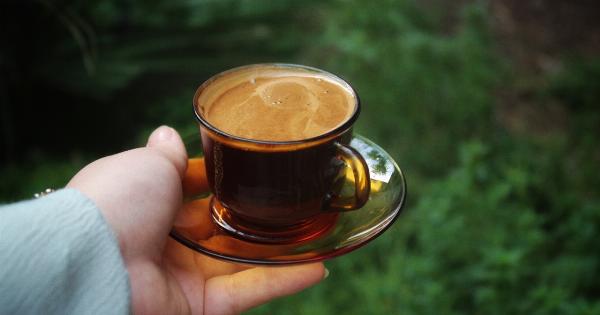When it comes to sex, many factors can influence the experience, including mood, environment, and physical well-being. Another crucial element that often goes unnoticed is the time of day.
The time of day can have a significant impact on sexual desire, performance, and satisfaction. In this article, we will delve into the science behind optimal sex hours and explore how different times of the day can affect your sexual experience.
Understanding Circadian Rhythms
Before we dive into the details, let’s first understand what circadian rhythms are. Circadian rhythms are the natural, internal processes that regulate various physiological and behavioral aspects of our bodies.
These rhythms follow a roughly 24-hour cycle and are influenced by external factors such as light, temperature, and social interactions.
One of the most well-known circadian rhythms is the sleep-wake cycle, which determines our periods of wakefulness and sleepiness throughout the day.
However, circadian rhythms also influence other bodily functions, including hormone production, blood pressure, and even sexual desire.
The Role of Hormones
While your sexual desire is influenced by various factors, hormones play a crucial role in regulating your libido.
Testosterone, the primary male sex hormone, and estrogen, the main female sex hormone, have a significant impact on sexual desire in both men and women.
Research suggests that testosterone levels are generally higher in the morning, peaking shortly after waking up. This surge in testosterone can enhance sexual desire, making morning sex an appealing option for many individuals.
On the other hand, estrogen levels in women tend to peak during the late follicular phase of the menstrual cycle, which could lead to increased sexual desire during this time.
Optimal Sex Hours: Morning
For those who experience higher testosterone levels in the morning, engaging in sexual activities during this time may result in more intense desire and heightened pleasure.
Additionally, morning sex can help kickstart your day with a rush of endorphins and provide numerous health benefits, including stress relief and improved cardiovascular health.
However, it’s essential to consider individual differences and preferences. Some people may find that they are more alert and energetic in the morning, making it an ideal time for intimacy.
Others may prefer a slower start to their day and find their sexual peak at different hours.
Afternoon Delight: Exploring Midday Sex
The afternoon, specifically between 12 pm and 5 pm, is often referred to as the “afternoon delight” period. During this time, many people experience a natural dip in energy levels, commonly known as the post-lunch slump.
While it may seem counterintuitive, midday sex can help combat this slump and provide a much-needed energy boost.
Engaging in sexual activities during the afternoon can help release endorphins, increase blood flow, and improve focus and productivity for the remainder of the day.
It can also be a pleasant break from work or other daily responsibilities, creating a sense of intimacy and connection with your partner.
Evenings: The Classic Choice
Evenings have long been considered the go-to time for romantic and sexual encounters.
This preference can be attributed to various factors, including the relaxation that typically follows a day’s work, an increased sense of intimacy during nighttime, and the opportunity to wind down and de-stress before sleep.
During the evening, the body’s hormone levels, including testosterone and estrogen, tend to be more balanced for both men and women.
This balance can lead to enhanced sexual desire and performance, making evenings an optimal time for many individuals.
Night Owls: Exploring Late-Night Intimacy
For those who thrive during nighttime hours, late-night intimacy can be a rewarding experience. Night owls often find that their energy levels peak during the late evening or early hours of the night.
This surge in energy can translate into elevated sexual desire and stamina.
Engaging in sexual activities before sleep can also promote a deeper and more restful slumber. During orgasm, the body releases oxytocin and endorphins, which can induce feelings of relaxation and facilitate sleep.
However, it’s important to balance late-night activities with the need for restful sleep to avoid disrupting essential sleep patterns.
Individual Preferences & Communication
While understanding the potential impact of different times of the day on sexual experiences is valuable, it’s crucial to remember that individual preferences and communication with your partner are key.
Everyone’s body and desires are unique, and what works for one person may not work for another.
Openly discussing your preferences, desires, and energy levels with your partner can help you find a mutually optimal time for intimacy. Communication ensures that both partners are comfortable, engaged, and satisfied during their sexual encounters.
Conclusion
The time of day can greatly influence the sexual experience, including desire, performance, and satisfaction. Understanding the role of circadian rhythms and hormone levels can help you identify the optimal sex hours for yourself and your partner.
Morning sex may be ideal for those who experience higher testosterone levels upon waking, while midday encounters can help combat post-lunch energy slumps.
Evenings offer a balanced mix of hormone levels and relaxation, and late-night intimacy can be a rewarding experience for night owls.
Remember, individual preferences and open communication are of utmost importance. By exploring and understanding your unique desires and energy patterns, you can create more fulfilling and memorable sexual experiences at any time of the day.





























